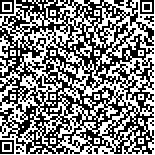| 引用本文: |
-
张婧怡,肖俊,梁军能,王婧杰,张旭,罗永巨.不同养殖环境下罗非鱼肠道微生物的比较分析[J].广西科学院学报,2020,36(2):164-170. [点击复制]
- ZHANG Jingyi,XIAO Jun,LIANG Junneng,WANG Jingjie,ZHANG Xu,LUO Yongju.Comparative Analysis of Intestinal Microorganisms of Tilapia under Different Culture Environment[J].Journal of Guangxi Academy of Sciences,2020,36(2):164-170. [点击复制]
|
|
| 本文已被:浏览 800次 下载 786次 |

码上扫一扫! |
| 不同养殖环境下罗非鱼肠道微生物的比较分析 |
|
张婧怡1, 肖俊2, 梁军能2, 王婧杰1,2, 张旭1,2, 罗永巨1,2
|
|
|
| (1.广西大学动物科学技术学院, 广西南宁 530004;2.广西水产科学研究院, 广西南宁 530021) |
|
| 摘要: |
| 为了比较不同养殖环境下罗非鱼肠道菌群结构和相对丰度变化规律,选取稻田和池塘两种养殖环境下的罗非鱼为研究对象,定期测定实验期间的水质指标(溶氧、水温、pH值和氨氮),取养殖202 d的罗非鱼,通过16S rRNA高通量测序检测其肠道微生物,并分析不同养殖环境下罗非鱼肠道菌群的变化规律。实验结果表明,养殖水质参数均在正常范围内,但不同养殖环境的水质参数存在差异,可能会导致罗非鱼肠道微生物的结构组成和多样性发生变化。在两种不同养殖环境下,梭杆菌门(Fusobacteria)、厚壁菌门(Firmicutes)和变形菌门(Proteobacteria)3个菌群相对丰度均较高。蓝菌门(Cyanobacteria)、拟杆菌门(Bacteroidetes)和放线菌门(Actinobacteria)物种丰富度存在显著性差异,其中蓝菌门在稻田组的罗非鱼肠道菌群中所占比例高于池塘组,而拟杆菌门和放线菌门在池塘组的罗非鱼肠道菌群中所占比例高于稻田组;在属水平下,Cetobacterium,Paeniclostrdium和Romboutsia等菌属在稻田组罗非鱼肠道菌群相对丰度较高,池塘组罗非鱼肠道菌群相对丰度较高的菌属为Cetobacterium,Enterovibrio和Plesiomonas等。不同养殖环境下,罗非鱼肠道微生物菌群分布及丰度有显著差异,该变化可为罗非鱼肠道微生物的研究提供基础数据。 |
| 关键词: 稻田养殖 池塘养殖 罗非鱼 肠道菌群 相对丰度 |
| DOI:10.13657/j.cnki.gxkxyxb.20200603.003 |
|
| 基金项目:“池塘生态化养殖岗位”项目(CARS-46),“养殖生物应对温度胁迫的生理和发育响应机制与生态效应研究”项目(2018YFD0900601)和“铜和镉复合暴露影响罗非鱼卵巢发育机制的研究”项目(31960733)资助。 |
|
| Comparative Analysis of Intestinal Microorganisms of Tilapia under Different Culture Environment |
|
ZHANG Jingyi1, XIAO Jun2, LIANG Junneng2, WANG Jingjie1,2, ZHANG Xu1,2, LUO Yongju1,2
|
| (1.College of Animal Science and Technology, Guangxi University, Nanning, Guangxi, 530004, China;2.Guangxi Academy of Fishery Science, Nanning, Guangxi, 530021, China) |
| Abstract: |
| In order to compare the change rule of the intestinal flora structure and relative abundance of tilapia in different culture environments,tilapia in two cultivation environments of rice fields and ponds was selected as the research object,and the water quality indicators (dissolved oxygen,water temperature,pH value and ammonia nitrogen) were regularly measured during the experiment period.The cultured 202 d tilapia was collected,and its intestinal microorganisms were detected by 16S rRNA high-throughput sequencing and the change rule of tilapia intestinal flora in different culture environments was analyzed.The experimental results showed that the water quality parameters were within the normal range,but the water quality parameters of different culture environments were different,which might cause changes in the structural composition and diversity of tilapia intestinal microorganisms.The relative abundance of Fusobacteria,Firmicutes and Proteobacteria were higher in two different culture environments.Cyanobacteria,Bacteroidetes and Actinobacteria had significant differences in species richness.The proportion of Cyanobacteria in the intestinal flora of tilapia in the rice field group was higher than that in the pond group,while the proportion of Bacteroidetes and Actinobacteria in the intestinal flora of tilapia in the pond group is higher than that in the rice field.At the genus level,the genus Cetobacterium,Paeniclostrdium and Romboutsia were relatively abundant in the intestinal flora of tilapia in the rice field group,and the genus of relatively high abundance of intestinal flora in the pond group was Cetobacterium,Enterovibrio and Plesiomonas. There are significant differences in the distribution and abundance of intestinal microflora in different culture environments,which can provide basic data for the study of intestinal microflora in tilapia. |
| Key words: rice field culture pond culture tilapia intestinal flora relative abundance |